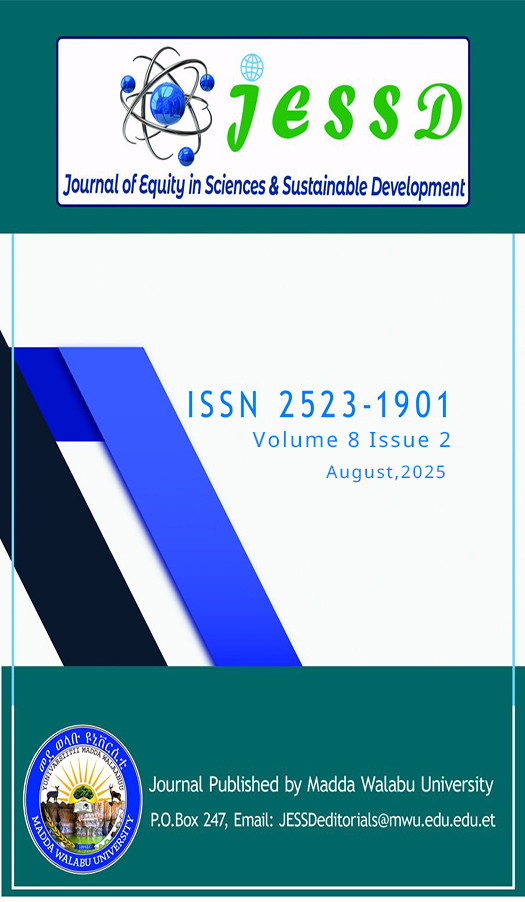The Potential of Rhizobium Isolates as a Biofertilizer for Common bean (Phaseolus vulgaris L.) Varieties Cultivated in Gurage Zone, Central Ethiopia
DOI:
https://doi.org/10.20372/mwu.jessd.2025.1581Keywords:
Biofertilizer, Common Bean, Grain Yield, Nodulation, RhizobiumAbstract
In Ethiopia's low and mid-altitude areas, the common bean (Phaseolus vulgaris L.) significantly contributes to food supply, smallholder farmer income, and foreign exchange earnings. Despite its importance, common bean yields are hampered by factors like poor soil fertility, particularly nitrogen deficiency, the prohibitive cost of synthetic fertilizers, and limited awareness of bio-fertilizers. To find a solution, field experiments were conducted in Ethiopia's Gurage Zone to assess the impact of rhizobia inoculation on common bean nodulation, yield-related characteristics, and overall yield. The research employed a factorial combination of four common bean varieties (Local, Awash-Melka, Awash-1, and SER-119) and five rhizobia treatments (un-inoculated control, CBR-14, CBR-J16, CBR-18, and CIAT-899), arranged in a randomized complete block design (RCBD) with three replicates. Data analysis using SAS revealed that both common bean varieties and rhizobia treatments significantly affected leaf area index (p<0.001), pod number per plant (p<0.001), hundred seed weight (p<0.05), above-ground dry biomass (p<0.001), and grain yield (p<0.001). Plant height (p<0.001), number of seeds per pod (p<0.01), and harvest index (p<0.001) were solely influenced by the bean varieties. Interactions between varieties and rhizobia, as well as their individual effects, significantly impacted plant branching and the number of total nodules (p<0.05), the number of effective nodules and nodule dry weight (p<0.001). Optimal nodulation was observed when the SER-119 variety was paired with rhizobium isolates CBR-18 or CIAT-899. SER-119 and CBR-18 independently resulted in the highest grain yields of 2935.41 kg ha-1 and 2459.2 kg ha-1, respectively, CIAT-899 performing similarly as CBR-18. Consequently, the SER-119 variety and the CBR-18 Rhizobium isolate are recommended for widespread adoption by farmers and stakeholders involved in common bean cultivation within the study region and comparable agro-ecological zones.
Downloads
Additional Files
Published
How to Cite
Issue
Section
License
Copyright (c) 2025 Madda Walabu University Journal of Equity in Sciences and Sustainable Development

This work is licensed under a Creative Commons Attribution-NonCommercial 4.0 International License.



